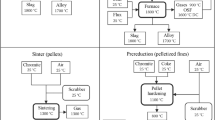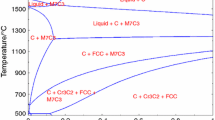Abstract
Maximizing minerals recovery from domestic resources and minimizing the energy requirements of mineral processing constitute two goals of the Bureau of Mines, U.S. Department of the Interior. Accordingly, the Bureau has determined that coal char is generally the preferred reductant among commercially available carbonaceous materials in laboratory scale reduction experiments in argon between 1100 and 1500°C on a domestic metallurgical grade chromite with respect to the degree of reduction and metallization. For a domestic high iron chromite, coal char is preferred between 1100 and 1300°C, whereas metallurgical coke is the reductant of choice at 1400 and 1500°C. Both domestic chromites display generally similar reduction characteristics. The degrees of reduction and metallization are proportional to the time and/or temperature used and generally the rate of reduction is greatest during the first 15 min. The high iron chromite is more easily reduced, especially at the higher temperatures. Relatively simple kinetic equations cannot adequately describe the reduction mechanism for both chromites. The reduction may be nucleation controlled, especially under conditions of interest to commercial operations. The results could be used as a guideline for prereducing domestic chromites for subsequent smelting operations.
Similar content being viewed by others
References
J. L. Morning: U. S. Bureau of Mines Bulletin 667, pp. 241–52, 1975.
K. P. Shaver and S. B. Lasday:Ind. Heating, 1975, vol. 42, no. 1, pp. 10–22.
W. A. Scholes:33 Magazine, 1974, vol. 12, no. 12, p. 38.
Y. Otani and K. Ichikawa:Proceedings of lNFACON 74, Helen Glen, ed., pp. 31-37, The First International Congress on Ferro-alloys, South African Institute of Mining and Metallurgy, Johannesburg, 1975.
W. L. Hunter and D. L. Paulson: U. S. Bureau of Mines Rep. of Investigation 6755,1966,20 pp.
N. A. Barcza: Report No. 1365, p. 14, National Institute for Metallurgy, Johannesburg, South Africa, 1972.
L. B. McRae:Proc. Second Int. Symp. on Agglomeration, vol. 1, pp. 356–77, SME-AIME, New York, NY, 1977.
N. L. Woollacott and J. B. See: Report No. 1950, 24 pp, National Institute for Metallurgy, Randburg, South Africa, 1973.
R. C. Urquhart, P. R. Jochens, and D. D. Howat:Proceedings oflNFACON 74, Helen Glen, ed., pp. 195-205, The First International Congress on Ferro- alloys, South African Institute of Mining and Metallurgy, Johannesburg, 1975.
R. D. Shannon and C. T. Prewitt:Acta Crystallogr., 1969, vol. B25, part 5, pp. 925–46;Acta Crystallogr., 1970, vol. B26, part 7, pp. 1046-48.
L. B. Pankratz: private communication, U. S. Bureau of Mines, Albany Met- allurgy Research Center, Albany, Oregon, 1976.
M. A. Qayyum and D. A. Reeve:Can. Met. Quart., 1976, vol. 15, no. 3, pp. 193–200.
H. K. Mao and P. M. Bell:Geochim. Cosmochim. Acta, 1975, vol. 39, pp. 865–74.
W. Gomes:Nature, 1961, vol. 192, no. 4805, pp. 865–66.
Author information
Authors and Affiliations
Rights and permissions
About this article
Cite this article
Nafziger, R.H., Tress, J.E. & Paige, J.I. Carbothermic reduction of domestic chromites. Metall Trans B 10, 5–14 (1979). https://doi.org/10.1007/BF02653965
Received:
Issue Date:
DOI: https://doi.org/10.1007/BF02653965




